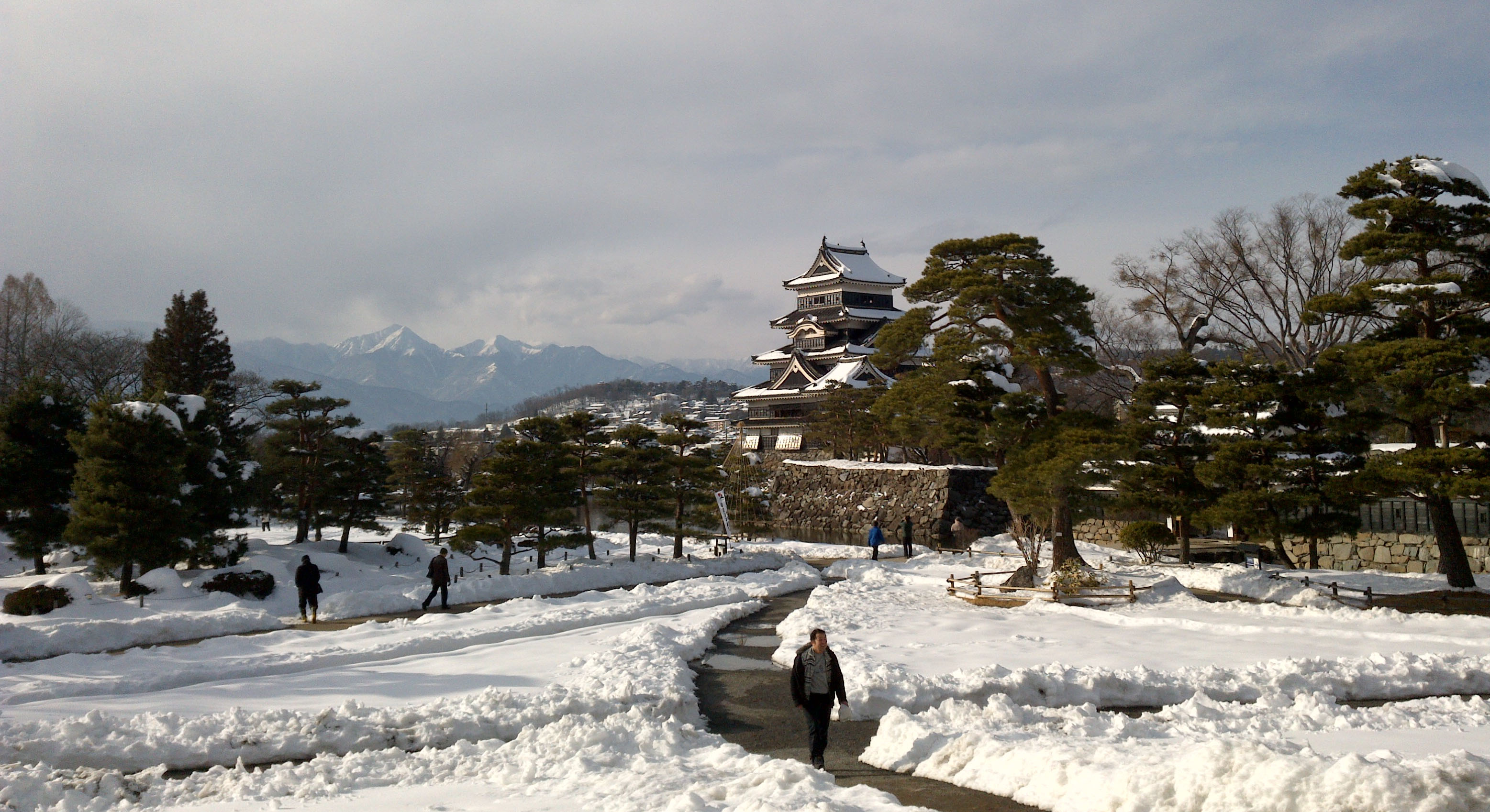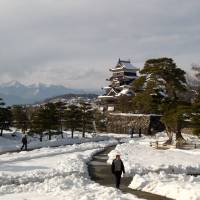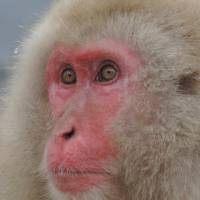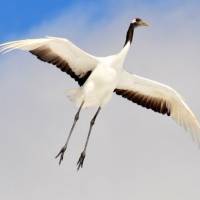As 2014 winds down and the promise of another year lies ahead, it's time to come up with a few New Year's resolutions. Instead of planning for the future or trying some new-fad diets or exercise regimes, how about a resolution to spend a little more time connecting with our wonderful natural world?
Exposure to the great outdoors, to greenery, to fresh air, to a natural visual and auditory landscape is refreshing and healthful, both physically and psychologically.
Personally, I find such exposure to nature life-affirming: it always helps chase away the staleness and blues accumulated while being desk-bound. A walk around the neighborhood, a wander through a park, a hike through a forest or along a mountain trail may tire the muscles, and yet I find they revive the flagging spirit and facilitate a sense of satisfaction at having been physically active. The effects are cumulative and, as a personal byproduct, those sorties in search of natural sights and sounds provide me with endless sources of ideas for articles and lectures.
If you do decide to head into the great outdoors, I would suggest you arm yourselves with the following items to ensure you make the most of your excursions: a compact pair of binoculars (great for all kinds of observations and, as a bonus, they can be flipped over to serve as a helpful hand lens for delving into the micro-cosmos), a small backpack in which to carry a lunch and any natural history field guides you may have, and a light umbrella or rain gear. Alternatively, you could just pick the days you spend outside with care.
With 2015 just around the corner, here are 12 suggestions so that you can also experience a natural new year.
January
Colorful winter waterfowl are abundant at this time of year. A park with a pond, a local river or a lake will offer you an opportunity to watch an array of ducks, including mallard, spot-billed duck, northern pintail and Eurasian wigeon. The males will all be sporting bright plumage, doing their utmost to attract females to choose them as their mates. Larger lakes may host wintering swans or geese, but this month seek out the gorgeous mandarin ducks that prefer the shade beside ponds surrounded by woodland. The pond at Tokyo's Meiji Shrine is a great place to start. The males, with their bright plumage and orange, sail-like wing feathers, are fun to watch, as are the females in their delicate shades of grey.
February
Snow season is great for monkey mayhem and so when the forecast indicates good wintry weather in central Honshu, head off to Nagano Prefecture, out to Kambayashi Onsen and walk along the wooded trail to Jigokudani Yaen-koen (all necessary information is available online). Here you can enjoy close-up encounters with Japanese macaques, including those that love to soak in the world-famous hot spring. Sharp-eyed naturalists may also spot Japanese serows on the slopes above the monkey pool and, if it is cold enough, you may find fascinating frost needles (shimobashira) emerging from exposed patches of soil beside the trail.
March
To learn about island biogeography from direct experience, there's few places better than the Izu islands of Miyake or Hachijo in the Pacific Ocean just south of Tokyo. The options are endless: explore the strange volcanic landscape and wander among lava fields; look for shiny acorns of a native oak, the chinkapin (Castanopsis sieboldii), which provides important food for the local Owston's varied tit; from the ferry at this time of year there should be hundreds of streaked shearwaters to watch, among which perhaps you will see a few albatrosses (all three North Pacific species — laysan, black-footed and short-tailed — are possible). Alternatively, head south to Amami-Oshima or Okinawa in search of an array of endemic frogs, birds and bats. It is even possible to go out on a local night safari on Amami to look for the endemic black rabbit, which is found there and nowhere else in the world.
April
Early spring butterflies, frogs and salamanders emerge at this time of year. What's more, the resident birdlife is in full song, making any park or woodland a pleasing place for an early breakfast picnic on a mild morning. If mountain hiking is your thing, then this is the time to look for semipermanent snow patches exhibiting the strange pinkish flush known as watermelon snow.
May
Visit your local river mouth, nearest wetland or wooded park in search of migratory birds. Migrating shorebirds stop off on their long journeys between southeast and northeast Asia to refuel and replenish fat stores for the remainder of their journey. Two of our commonest species — red-necked stint and grey-tailed tattler — are likely to be present this month. In woodlands, the gorgeous Narcissus flycatcher will have returned. Resplendent in black, orange and white, this lovely creature has a rival for "beauty of the woods" title in the aptly named blue-and-white flycatcher — another returning migrant to put on your target list for the year.
June
The buzzing sound of cicadas ushers in summer in our northern forests, while the sawing and stridulating sounds of grasshoppers provide the auditory backdrop in every grassland area. This is the month to seek out the beautiful northern azaleas and rhododendrons that bring tremendous splashes of color to higher altitudes or more northerly forests.
July
July is the best time to make a summer visit to east Hokkaido with the aim of seeking out red-crowned cranes and their young chicks. Along the way you will most likely encounter Japanese deer and red fox, and, if you take a special boat trip out from the little port at Ochiishi, you may also see colorful tufted puffins.
August
August is the month in which to plan an alpine hike to look for late alpine flowers and butterflies and perhaps bump into a confiding rock ptarmigan or two. If you have the patience to spend time scanning upper wooded slopes, you may even be fortunate enough to spot an Asiatic black bear.
September
There are early signs of autumn in the air and in the woods in September. At this time of year, deciduous trees are already showing promise of the pending season. Now is the best time to make a fungal foray to seek out some of the extraordinary species that help form soils through the process of decay, facilitate plant growth by entwining their mycelia with root systems of trees and other plants, and, along the way, produce fruiting bodies — namely, mushrooms — in myriad forms and colors. Some are sublimely edible, some are mildly toxic and others entirely deadly. An easy group of edible fungi to identify are spherical, white puffballs but their bizarre cousins, the earthstars make for a more exciting find. Among the easiest to spot are the white-flecked, red-capped fly agarics. Don't be tempted, however — they are not nicknamed "berserker mushrooms" for nothing.
October
This is the month to celebrate dragonfly days. On gossamer wings they shimmer like a final mirage of the fading summer. They chase down smaller insect prey, but cooling temperatures, typhoon winds and rain start to reduce their numbers day by day. Ultimately, these dragonflies are doomed. Sunny dawns find them perching in prominent spots, orienting themselves to absorb solar warmth, or perhaps drying off some morning dew before setting off on what may prove to be their final hunt.
November
In November, an insect of a very different kind appears. Easily missed, these flying little furry flecks of white are yuki mushi (snow bugs) that are said to presage the first snowfalls of winter. See them and it's definitely time to make that seasonal switch around in your wardrobe.
December
December is the month in which to take stock of all of the amazing creatures that have made themselves at home in the Japanese archipelago over the year. There's still time for one last adventure, however. This is the month for travelers to make a trip to the Ogasawara Islands to catch sight of humpback whales, green turtles, spinner dolphins, fruit bats and the bizarre glow-in-the-dark green pepe mushrooms.
Wherever nature leads you in 2015, I hope you will all have a great year. I am already looking forward to mine with great anticipation ...
Mark Brazil has written "Wild Watch" for more than 30 years. He also organizes and leads wildlife, birding and photographic excursions around Japan. His latest book, "The Nature of Japan: From Dancing Cranes to Flying Fish," is available from www.japannatureguides.com or from the Junkudo Ikebukuro bookshop in Tokyo.





















With your current subscription plan you can comment on stories. However, before writing your first comment, please create a display name in the Profile section of your subscriber account page.